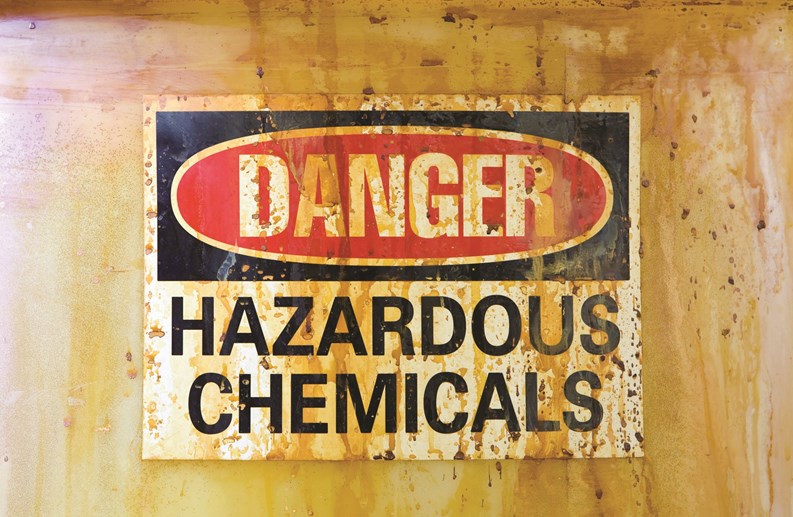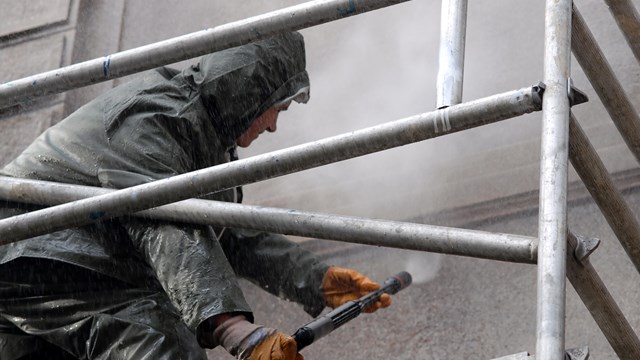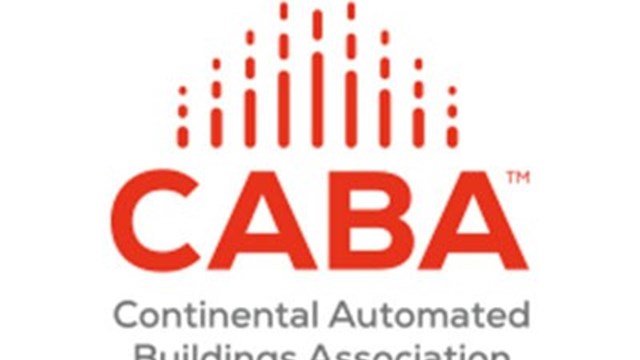It takes a lot of different tools and materials to keep multifamily buildings looking, smelling and functioning at their best. That means that maintenance crews, contractors, snow removal teams, and other staff members must rely upon sometimes harsh and hazardous chemicals, as well as potentially dangerous tools, to get their jobs done.
When it comes to properly storing, handling and disposing of those materials, it is imperative that all rules, regulations, and guidelines are followed in order to ensure the safety of not only the staff and those working with the materials directly, but also of every resident in the building or association.
Hazards on Deck
The Environmental Protection Agency (EPA) defines household hazardous materials or waste as certain “leftover household products that can catch fire, react or explode under certain circumstances, or that are corrosive or toxic.” This includes products such as paints, cleaners, oils, batteries and pesticides, to name a few.
The types and amounts of materials found in co-op or condo buildings “depends on how much work the building staff does itself” versus hiring out maintenance or landscaping duties to outside contractors, says Richard Lester, President of Garden State Environmental Inc., in Glen Rock.
When it comes to the storage of these types of products—and looking out for the safety of residents and staff—common sense and caution should inform all decisions. In fact, says attorney Adam Leitman Bailey, founder of the New York City law firm Adam Leitman Bailey, P.C., the best idea is simply to keep chemicals off site. “Most flammable or hazardous materials are used in painting or repairs,” he says. “There’s no reason for them to be kept on site. They can be disposed of and new paint or materials purchased when they’re needed.”
If it’s not possible to keep these items off-site, or it is more expeditious to keep them close at hand, it is important to know where and when they are entering the building or association complex, and who is overseeing and securing them. Says Lester, “There are several different ways that hazardous materials can come on to a property.” The first is whatever property employees bring on site for their daily work. “The second way is through contractors,” Lester says. “If you’re getting a new roof, for example, they’ll be bringing in tar, adhesives and propane. Associations need to be aware of this so that they’re not bringing in hazards or creating potential problems.”
The third way is when a resident independently hires an outside contractor to do unit renovations or updates. They may be bringing in materials like strong solvents that could create an odor that disrupts or could be harmful to other residents. “There should be rules in place” to manage these situations and minimize risk, says Lester.
Following the Rules
Fortunately, a broad range of protections and guidelines exist to help people best understand how to use, store and dispose of these chemicals and other products. Both the Centers for Disease Control and Prevention (CDC) and the EPA offer extensive online resources detailing ways to ensure the proper handling of cleaners, paints and other hazardous household materials. Those guidelines are there to help protect the building and association as well as surrounding communities that could be affected by contamination of water, soil or air. Among their guidelines are:
• Follow product label directions for chemical storage
• Dress for safety by wearing appropriate safety equipment (for example, safety goggles, gloves, and mask)
• Separate incompatible chemicals (for example, acid and chlorine)
• Lock chemicals up to protect people and animals
• Keep chemicals dry and do not mix different chemicals (for example, different types of chlorine products)
• Keep chemicals cool in a well-ventilated area away from direct sunlight
• Keep chemicals closed in original, labeled container
• Store liquid chemicals low to prevent accidental contact (for example, by leaking) with chemicals or substances stored below them.
“It is important to follow EPA guidelines because products, such as paints, cleaners, oils, batteries, and pesticides can contain hazardous ingredients and require special care when you dispose of them,” says David Kluesner, a spokesman for the agency. “Improper disposal of these wastes can pollute the environment and pose a threat to human health. Certain types of household hazardous waste also have the potential to cause physical injury to sanitation workers, or contaminate septic tanks or wastewater treatment systems if poured down drains or toilets.
One way to ensure that maintenance, groundskeeping or construction crews know what they are doing is for employers to follow the Hazards Communication Standard established by the federal Occupational Safety and Health Administration (OSHA).
“The standard governs how employers need to train and advise their employees of hazards they face at work,” says Lester. That standard also ensures that all chemicals produced or imported are classified according to their potential hazards in order to help store and use them safely.
According to the OSHA website, protective measures may include developing and maintaining a written hazard communication program for the workplace, including lists of any and all potentially dangerous chemicals present; labeling of containers of chemicals in the workplace; preparation and distribution of safety data sheets to employees and downstream employers; and development and implementation of employee training programs regarding hazards of chemicals and protective measures.
Says Bailey, “Every employee should follow all protocols and make sure they are using these chemicals in a way that prevents harm.” He suggests that these protocols be established and reviewed by the building’s manager and superintendent and spell out exactly why they may be dangerous and how to use them properly.
Ensuring that these protocols are in place and being followed consistently not only improves safety and security within the building, it also helps protect the building or association should anything go wrong. If there is a fire, for example, “The building could be sued for negligence if the staff were not using materials properly,” says Bailey. “In these situations, prevention is always the best policy.”
Another consideration involves contractors. Whenever they bring materials into the building or on association grounds, it is imperative that management knows what is happening and what is involved. Materials used in construction projects, for example, could cause air quality issues for residents. “Contractors must provide insurance and indemnification and get approval from the building’s engineer before starting any job,” says Bailey.
Even contractors who do ongoing work such as maintenance, snow removal or lawn work should be able to reassure building management by demonstrating that they have trained their staff in the proper use of all of the tools and chemicals that are part of their job. “If a management company has employees on site, it’s their responsibility to educate,” says Lester. “For the contractor, it’s their responsibility for their own employees.” He also suggests ensuring that the building has full and complete insurance in the event that anything goes awry. “You want to make sure that anything that could possibly go wrong is covered,” he says.
Proper Care and Handling
Common sense and the careful reading of labels can go a long way toward reducing the risks associated with potentially dangerous products. According to the EPA, users should always read labels for disposal directions “to reduce the risk of products exploding, igniting, leaking, mixing with other chemicals, or posing other hazards on the way to a disposal facility.”
Hazardous products also should never be switched out of their original containers; paint, bleach, or other chemicals should never be put into empty food containers, for example. Labels also should never be removed or altered. If containers are corroding from age, rust, or water damage, the EPA suggests calling a local hazardous materials official or the fire department for instructions on what to do to get rid of the contents safely.
When there are leftovers of products, never mix them together. As the EPA states, “Incompatible products might react, ignite or explode, and contaminated HHW [household hazardous waste] might become unrecyclable.” And even when the containers are empty, it is important to remember that they may still pose a danger because of the residual chemicals left inside. They should always be handled with care.
Disposing of chemicals should always be done cautiously, and with careful attention to any instructions provided. Some states, such as New Jersey, have countywide hazardous household waste pick-up days, says Lester. Schools, companies, individuals, and residential buildings can take advantage of this service to clear out unused or outdated materials.
For larger quantities of material, “There are companies out there that are licensed to dispose of these things,” says Lester. “Say you’ve done a large industrial paint job, and there are drums of material left over. These companies can remove them from your site.” Paperwork helps chart the course of the material so it does not end up in a non-approved location. “They call it ‘cradle-to-grave’ disposal,” says Lester. “Everything has to be documented from the point of generation to disposal and destruction.”
More to Consider
Chemicals are not the only items found in a building’s basement or storage shed that require extra diligence. Sharp implements used for gardening or repairs also can pose concern, especially if children decide to wander through a basement or storage facility. Having storage and safety protocols in place can go a long way toward preventing an unfortunate accident or incident.
Another way to lessen risks with regard to hazardous materials is to make substitutions. “Porters, cleaners and maintenance staff may use different types of cleaning products, and some -- like bleach and ammonia -- are more hazardous than others,” says Lester. “Reduce risk by substituting less hazardous chemicals and selecting safer products.” For example, the EPA suggests using a mixture of vinegar or lemon juice and water as glass cleaner, or baking soda for a rug deodorizer.
For management and board members, safety is a top priority and that includes providing a secure, protective environment and updated protocols for any and all potentially dangerous materials. When in doubt, it never hurts to consult an expert, preferably before a problem begins, says Lester. “Ideally, the contact should be proactive, not reactive,” he says. “More often than not, something happens and shareholders get upset and the building has to react.” The communities that most often come out ahead are those that examine potential problems up front and put procedures in place to address those issues.
When standards are in place and rules are followed, risks can be managed and everyone involved, from management to staff to residents, can breathe a collective – and healthy – sigh of relief.
Liz Lent is a freelance writer and longtime contributor to The New Jersey Cooperator.







Leave a Comment